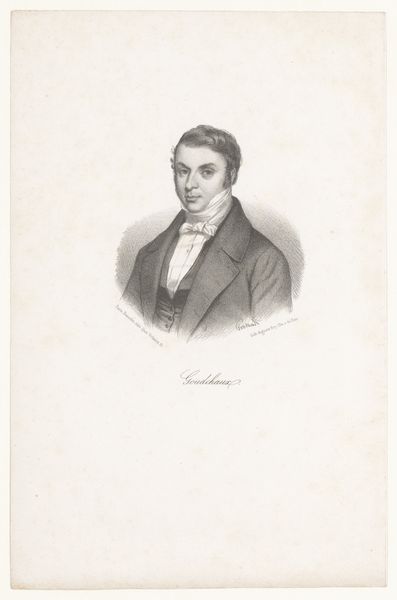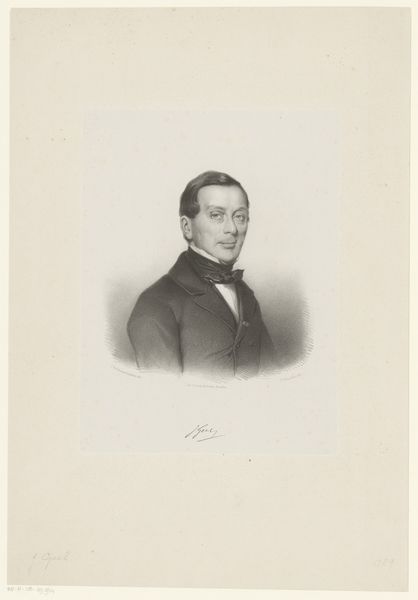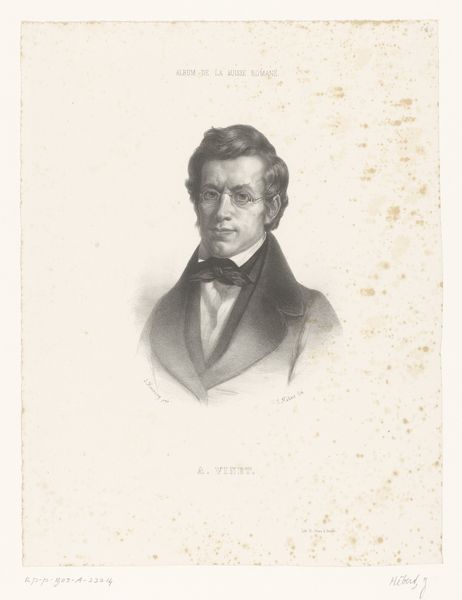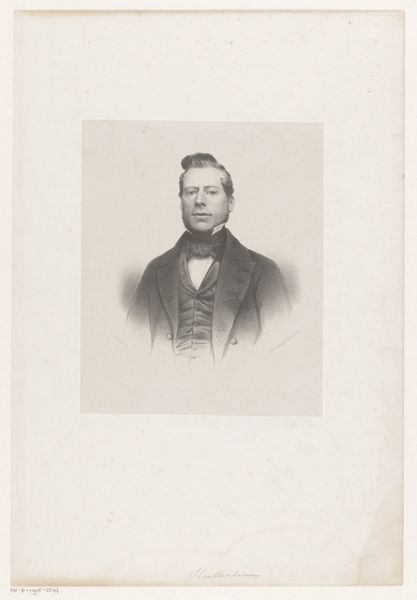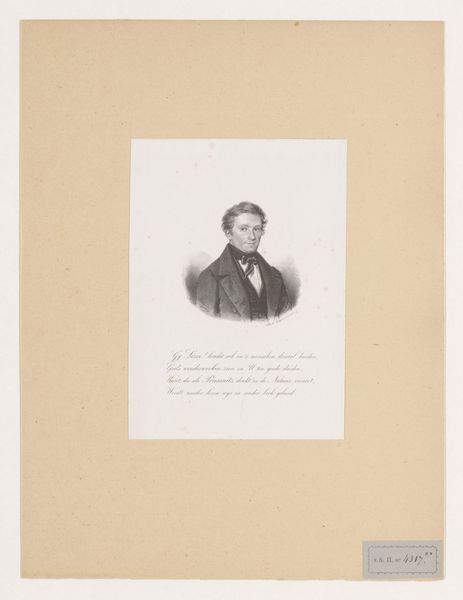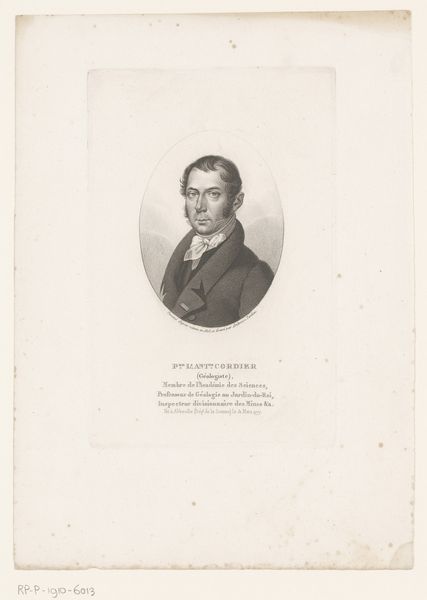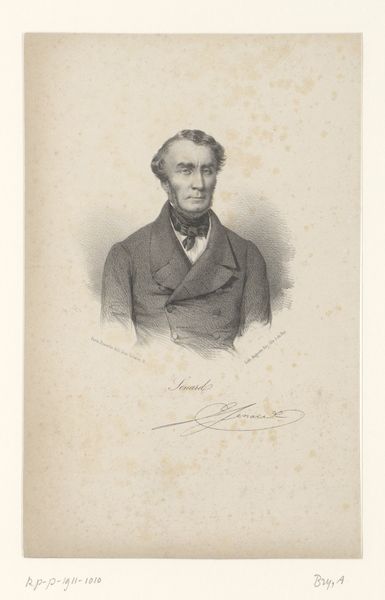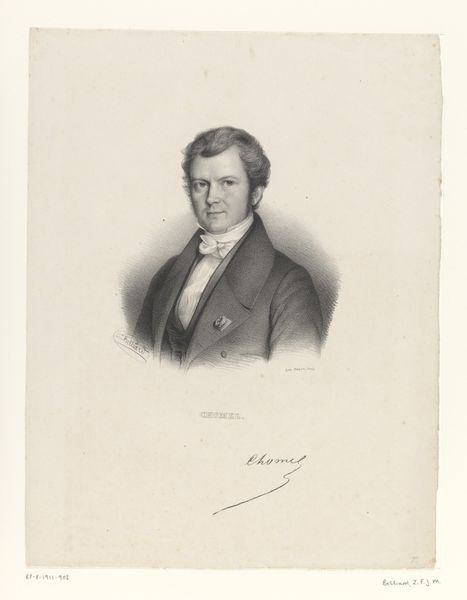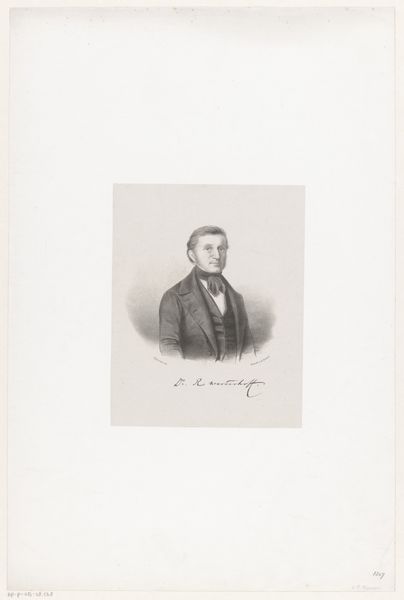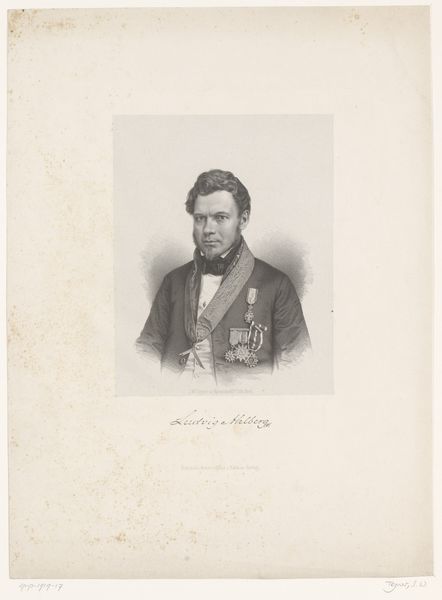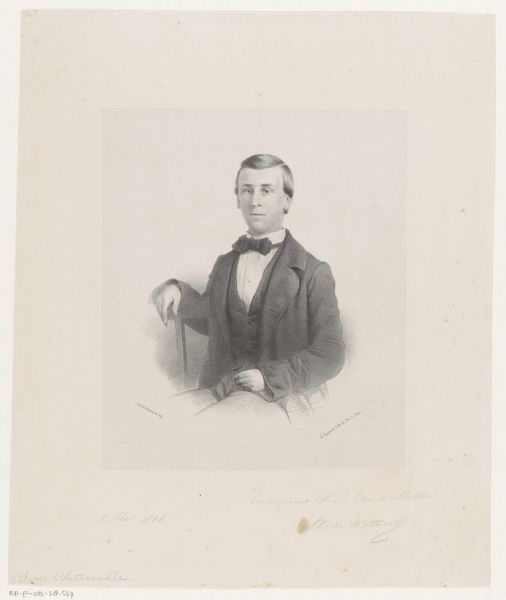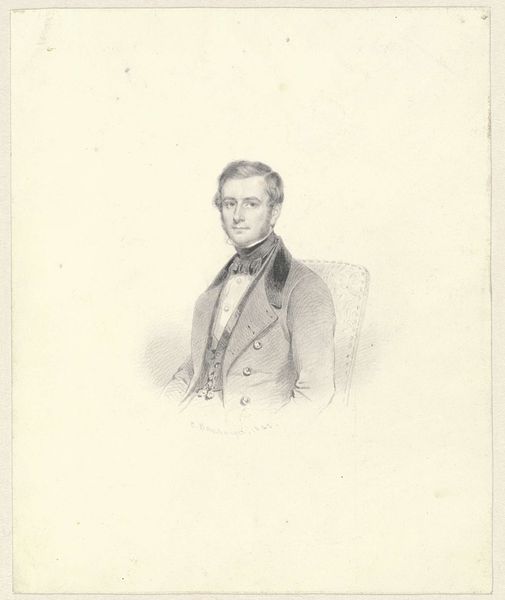
drawing, print, graphite
#
portrait
#
drawing
#
16_19th-century
# print
#
graphite
#
realism
Dimensions: height 276 mm, width 179 mm
Copyright: Rijks Museum: Open Domain
Curator: Here we have Alphonse Farcy’s 1851 portrait of Léon Faucher, rendered with graphite in a print. A study in monochromatic tonalities, wouldn't you say? Editor: My initial impression is one of somber formality, wouldn’t you agree? It's almost clinical. He appears contained, rigid. Curator: Precisely. The controlled use of line and shading lends the subject an air of bourgeois stoicism so representative of mid-19th century portraiture. Note how Farcy builds form through incredibly delicate cross-hatching. The subtle gradations are key. Editor: But Faucher was Minister of the Interior during a tumultuous period, helping suppress the burgeoning socialist movement after the 1848 revolution. Doesn't that context seep into the image? This isn't merely bourgeois stoicism; it's the face of political repression. Curator: An interesting interpretation, but look again at the execution. Observe the artist’s treatment of light as it falls across his face. See how it sculpts the cheekbone and brow. The precision here elevates the work above mere propaganda. It's about capturing an essence of human form. Editor: Can we truly separate form from content, especially when the subject is a political figure actively shaping events? Consider the very act of commissioning such a portrait: it’s a statement of power and control, designed to project an image of authority. Curator: A fair point, but I think we must still admire the technique, the artist's sheer skill in manipulating graphite to create such a lifelike image. Look at the rendering of the cravat; the textural contrast is magnificent! Editor: And, let’s not overlook who was allowed such masterful depictions, while others of that time, women, colonized peoples, the poor—remained outside the frame, often demonized or rendered invisible. The act of selection is inherently political, even in portraiture. Curator: A sobering counterpoint. Perhaps in appreciating the technical virtuosity, we must also acknowledge the wider social and political currents in which Farcy and Faucher operated. Editor: Indeed. By recognizing those historical dynamics, the aesthetic appreciation gains deeper meaning, as this is never just about “likeness.” Thank you for helping me frame that.
Comments
No comments
Be the first to comment and join the conversation on the ultimate creative platform.
